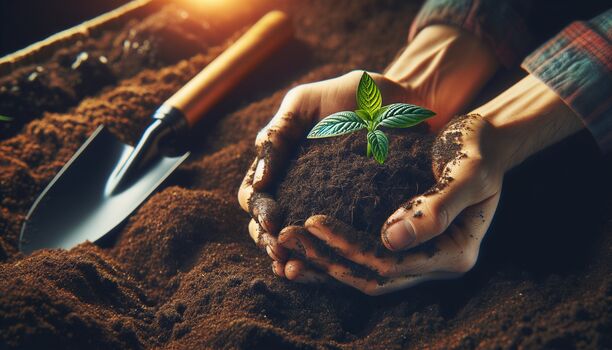


Letztes Update: 13. September 2025
The article explores key soil health indicators essential for a thriving garden. It provides sustainable strategies to assess and enhance soil quality over time, helping gardeners maintain a healthy and productive garden environment.
As someone who has a keen interest in gardening and sustainable practices, I've come to realize the importance of maintaining healthy soil. I'm curious about what the key soil health indicators are. Knowing how to assess the health of my garden's soil is crucial for me to ensure that my plants thrive. However, I'm not quite sure what specific signs or indicators I should be looking for.
Moreover, I understand that soil quality can change over time and that it requires continuous effort to improve and maintain its health. I'm eager to learn about the most effective strategies or methods to enhance soil quality in a sustainable way. Are there any particular practices that are more beneficial for soil health than others?
Could anyone share insights or tips on identifying the key soil health indicators and suggest practical ways to improve soil quality over time? Your advice would be greatly appreciated, as it would help me and others who are passionate about gardening to foster a more thriving and sustainable garden environment.
Last updated 3 mins ago
Antwort der Redaktion
Soil health indicators are specific signs that help you determine the condition of your soil. These indicators can tell you a lot about the soil's ability to support plant life and its overall fertility. By understanding these indicators, you can make informed decisions about how to manage and improve your soil over time.
The texture of your soil is one of the primary soil health indicators. It refers to the proportion of sand, silt, and clay in the soil. A balanced texture, often referred to as loam, is ideal for most plants as it retains moisture while allowing excess water to drain away.
Good soil structure is another important indicator. Healthy soil has a crumbly texture that allows roots to penetrate easily. It should not be compacted, as compacted soil restricts root growth and water movement.
Organic matter is crucial for soil health. It improves soil structure, provides nutrients, and enhances water retention. You can increase organic matter by adding compost or well-rotted manure to your garden.
The pH level of your soil affects nutrient availability. Most plants prefer a pH between 6 and 7. You can test your soil's pH with a simple kit and adjust it by adding lime to raise the pH or sulfur to lower it.
Healthy soil is teeming with life, including earthworms, insects, and microorganisms. These organisms help decompose organic matter, aerate the soil, and control pests. A lack of biological activity is a sign that your soil may need improvement.
Improving soil quality is a gradual process that requires consistent effort. Here are some sustainable practices to enhance your soil's health:
Incorporate organic materials like compost, leaf mold, and green manure into your soil. This not only improves structure and fertility but also boosts biological activity.
Rotating crops prevents nutrient depletion and reduces pest and disease buildup. It also helps maintain soil structure and fertility.
Planting cover crops, such as clover or rye, during the off-season protects the soil from erosion, adds organic matter, and improves nutrient cycling.
Excessive tilling can damage soil structure and reduce organic matter. Instead, practice minimal tillage to preserve soil health.
By paying attention to soil health indicators and implementing sustainable practices, you can significantly improve the quality of your soil over time. This will not only benefit your plants but also contribute to a more sustainable garden environment. Remember, healthy soil is the foundation of a thriving garden.
Last updated 3 mins ago
Understanding soil health indicators is crucial for anyone looking to maintain a vibrant garden. Soil health plays a significant role in the growth and sustainability of your plants. By recognizing these indicators, you can take steps to improve your soil's quality, ensuring your garden thrives. It's all about creating a balanced environment where your plants can flourish.
If you're keen on enhancing your garden's ecosystem naturally, you might wonder about pest control. How can I naturally repel pests from my vegetable garden without using harsh chemicals? This question leads to exploring organic methods that not only protect your plants but also contribute to the soil's health. Natural pest control techniques are an integral part of maintaining a healthy garden.
Another aspect of a healthy garden is how waste is managed. Composting is a fantastic way to recycle kitchen and garden waste into rich soil. If you're working with limited space, you might think composting isn't an option. However, Can anyone recommend a sustainable composting method for small urban gardens? This question addresses the challenge by offering solutions that fit even the smallest of spaces. Composting not only improves soil health but also reduces waste, making it a win-win for your garden and the environment.
By focusing on soil health indicators, natural pest control, and efficient composting methods, you can significantly enhance the quality of your garden. Each step you take towards understanding and improving soil health indicators contributes to a more sustainable and thriving garden ecosystem.